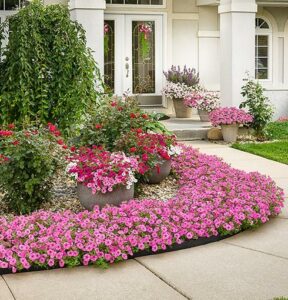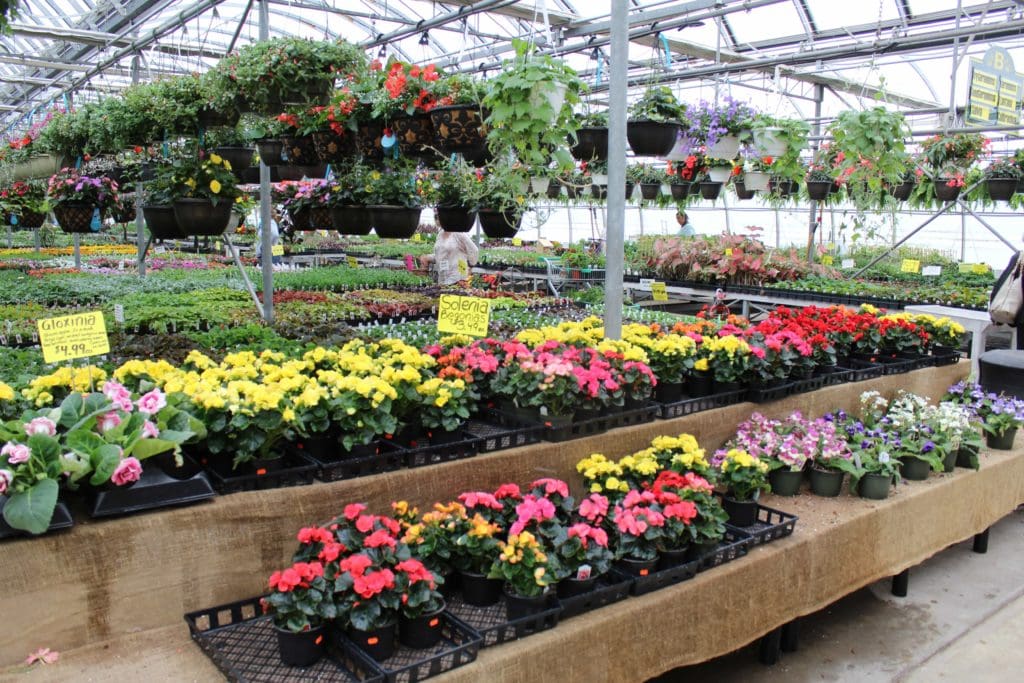Are you thinking about adding some color to your home? Annuals are the easiest and best solution if you want continuous color all summer long. Not only will they give your spirits a lift but will provide curb appeal and welcome your visitors. Annuals give you the most color for your money.
As easy and reliable as annuals are, there are just a few guidelines to follow for you to have the best success in having a beautiful display.
Selecting Your Flowers
Plant sun-lovers in the sun and shade-lovers in the shade. Know your property’s relationship to the sun. If your flower planting label says ‘full sun’, then know that your flowers will need 6 to 8 hours of full sun and if your flowers need part sun, then 4 to 6 hours is perfect. If your requirement is shade or part shade, then 4 hours or less of sun and preferably morning sun.
Think about your color preferences. You may like complimentary colors, a bed planted all one color, or a multitude of colors. Plant growth patterns are also important to consider when shopping. And if you have a deep flower bed, you’ll want to select a variety of tall, medium, and shorter flowers.
Read: 12 Best Annuals for Your Sunny Yard
Prepare the Soil

Work your soil and add a layer of compost/organic matter.
One of the most important, yet overlooked, requirements for a beautiful garden begins with great soil Plants will struggle or thrive based on the quality of the soil in which they are planted. Before planting, work your soil and add a layer of compost/organic matter, or other garden soil into the existing soil. This will provide your annuals a great boost of nutrients and the loosened soil will be much easier to plant in.
Proper Spacing

Supertunia-vista bubblegum annuals. Photo: Proven Winners.
Look at the tag and see what is recommended for spacing when planting and you might plant even a little closer than that because you don’t have to worry about being exact since the nature of annuals is to enjoy for just a few months. They will fill in quickly this way and you don’t have to wait all season for them to fill in.
And if you have a deep flower bed, you’ll want to select a variety of tall, medium, and shorter flowers.
Deadheading
Certain flowers require deadheading which require you to remove the dead flowers to encourage continued blooming and to prevent plants from going to seed. This task should be done weekly but there are many flowers that require no deadheading.
Fertilization
Most annuals are heavy feeders and will produce much better when fed. Put in a slow release fertilizer (Osmocote) in the bottom of the hole as you plant. Then Miracle Gro (or other liquid fertilizer) every few weeks
Fertilize Regularly! Feed annuals with a water-soluble fertilizer regularly. Most flowers are heavy feeders and will produce much better when fed.
Mulch
Mulching holds moisture, keeps the soil temps low in the hot summer, and suppresses weeds.
Water Requirements
Newly planted beds will need to be watered well as they become established. And throughout the growing season, make sure each time you water that the soil is moistened well below the surface to reach the roots.
Annuals are a small, but mighty enhancement to your property. After you plant your annuals, all you need to do is sit back, relax and enjoy your colorful surroundings.
Whitehouse Landscaping is a full service landscaping company. We offer a wide range of landscaping services, pretty much anything your landscape requires. From landscape maintenance, landscape design, fertilization, patios, fire pits and all landscape enhancements.
Contact Whitehouse Landscape for a free consultation or call 484-300-4290.

